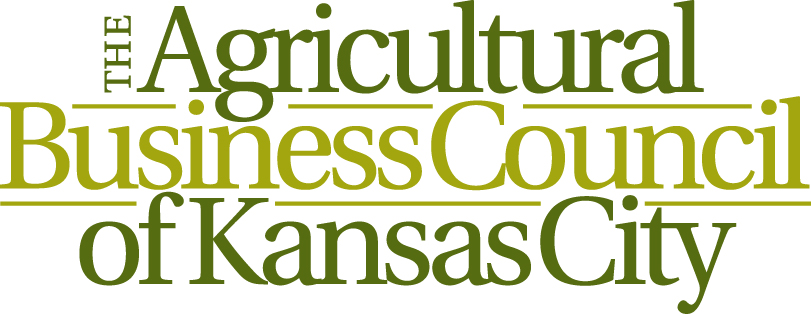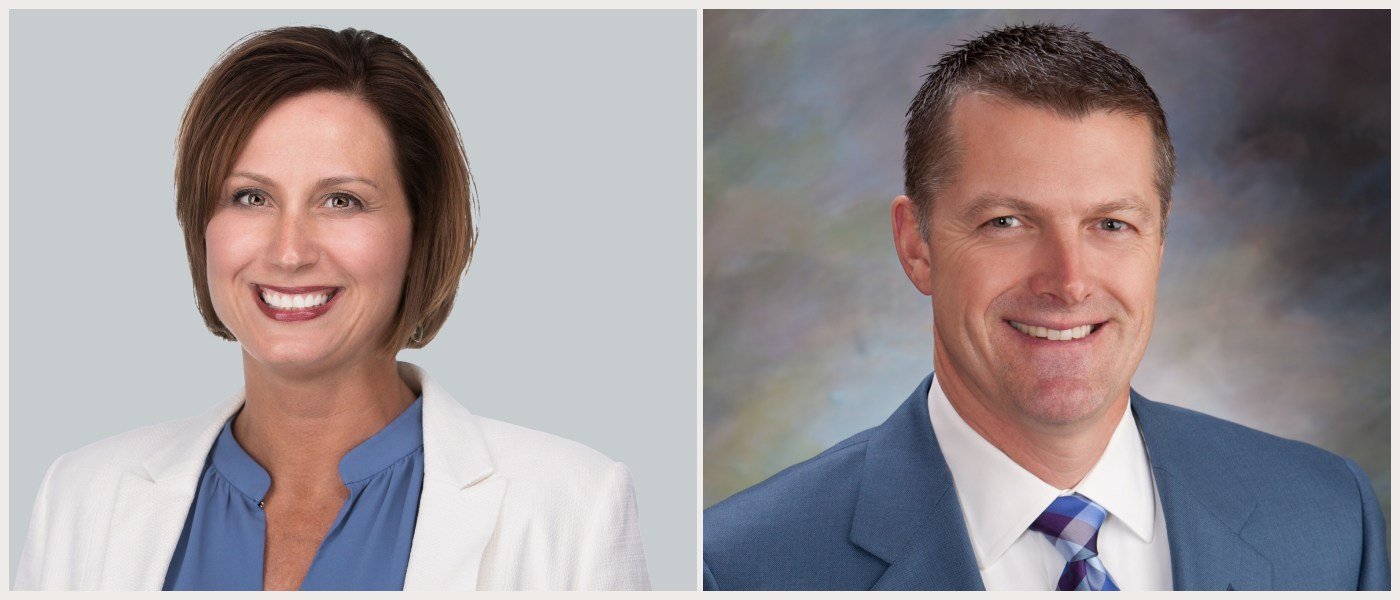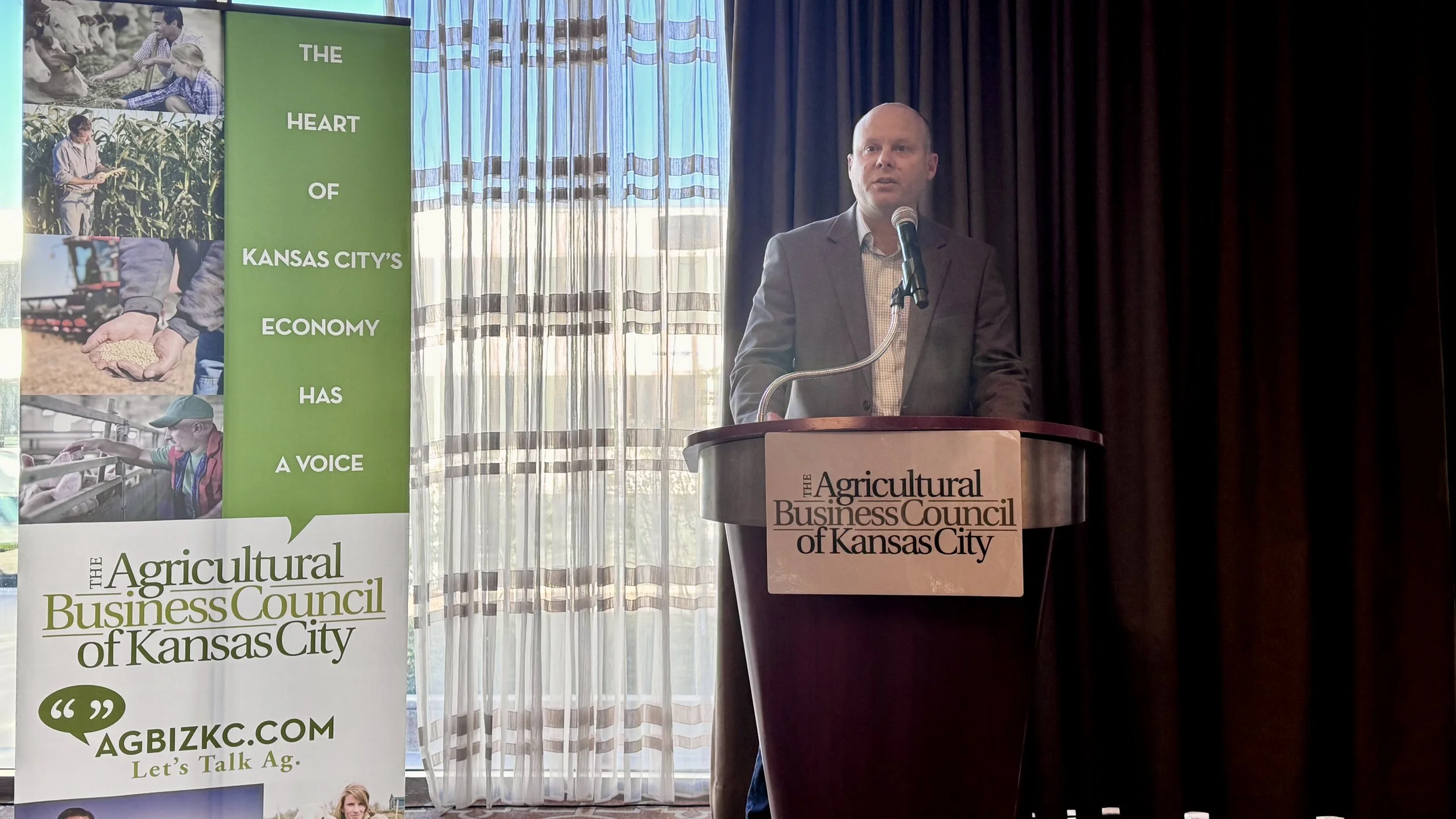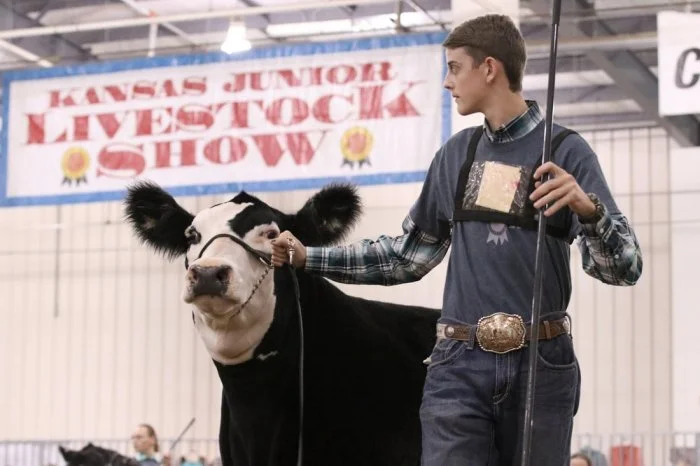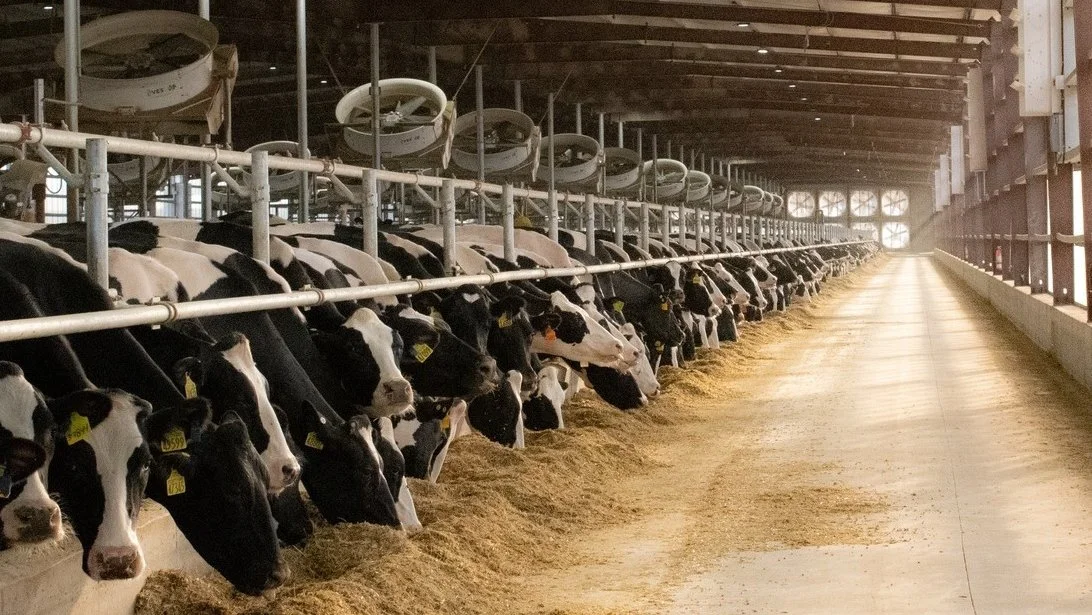DEVELOPMENTS
The Agricultural Business Council held its first Emerging Leaders Initiative happy hour event on October 22. Around 40 rising professionals in the ag industry joined AgBizKC leaders for a drink at the J. Rieger & Co. distillery. Join us for the next happy hour in early 2026; further details will be available on the website.
Kansas Livestock Association and NCBA are encouraging members to send a message directly to their legislators in Washington, DC, urging them to push back on a White House plan to import Argentine beef as a way to bring beef prices down. This would harm U.S. producers and interfere with the free market, KLA noted, which is working alongside NCBA to ensure the administration understands the industry’s opposition to government intervention in the marketplace and the lack of any consumer-facing benefit stemming from it. The administration needs to let markets work, said the two groups. Beef prices reflect strong consumer demand for the high-quality, nutritious steaks, roasts and ground beef provided by U.S. producers, and reflect the higher input costs faced by ranchers and cattle feeders. KLA and NCBA said Argentina has a deeply unbalanced trading relationship with the United States, meaning they sell far more of their beef into the U.S. market than the U.S. can sell into Argentina.
Over the last five years, Argentina has sold $801,859,558 worth of beef to the U.S.
In the same timeframe, Argentina purchased only $7,484,176 from the U.S.
This represents a trade deficit of $794 million over the past five years.
Argentina also has a history of Foot-and-Mouth Disease (FMD), and USDA’s controversial approval of Argentine beef for the U.S. market is still a sore point for most U.S. cattle producers.
American Farm Bureau Federation president Zippy Duvall commented last week on the future of America’s beef supply. “Farm families are no different from other American families. We feel the impact of higher grocery costs, but don’t get to set the prices. Meanwhile, farmers are suffering through an economic storm – expenses remain high, and cattle farms have been decimated by years of low prices, drought and the threat of the New World screwworm. “This is a pivotal moment for America’s cattle farmers as they make decisions whether to restock their pastures. Farmers know America’s families prefer to buy U.S. beef. If expanded imports push farmers deeper into the red, we face the unintended consequence of increasing reliance on other countries for our food and weakening our ability to rebuild a strong American herd.”
Kansas Department of Agriculture is accepting applications for the FY26 Crop & Livestock Research Grant Program. Funds for the program are appropriated to the agency by the Kansas Legislature from the State Water Plan Fund. This is a competitive, reimbursement-based grant program. Applications will be evaluated by a technical review committee. The recommendations of the committee will be submitted to the Kansas Secretary of Agriculture, who will make the final award determination. Applications are due to KDA no later than 5:00 p.m. on November 25, 2025. For more information, please download and carefully read the FY26 Request for Applications document from the KDA website: agriculture.ks.gov/grants.
The College of Agricultural Sciences at Penn State University has released findings from a 5-year study on how online grocery shopping has affected food choices, household waste and nutritional disparities. Online grocery shopping soared during COVID-19, when social distancing recommendations enabled home delivery to become a practical alternative to going to the store. While social distancing has ended, online grocery shopping has not. In August, online grocery sales for the month surpassed $11 billion. The full report is available at https://agsci.psu.edu.
Global agriculture technology company Corteva has announced plans to separate into two independent, publicly traded entities. Current Corteva will continue to sell crop protection products: herbicides, fungicides, insecticides and biologicals. New SpinCo will focus on the seed genetics business. SpinCo will include Pioneer, the company’s legacy seed brand established in 1926, as well as Brevant regional seed brands, including Dairyland Seed. Upon separation of the companies, Greg Page, current Corteva chairman, will lead new Corteva, while Chuck Magro, current Corteva CEO, will become CEO of SpinCo. In announcing the decision by Corteva, Magro said the farmer-centric organization appreciates that its customers want and need choice across their input decisions. “The best way, maybe I can even say, the only way for this company to preserve and expand that choice and keep putting innovative, effective, sustainable solutions into the hands of farmers around the world is to give both businesses the freedom to operate without having to look out for the other,” said Magro.
Kansas Farm Bureau’s Rural Kansas Apprenticeship Program received a $381,000 grant from the Kansas City-based Patterson Family Foundation to expand the trades workforce in rural Kansas. “RKAP is committed to building a high-quality workforce in rural Kansas,” said Joel Leftwich, KFB chief strategy officer. “We’re incredibly grateful to the Patterson Family Foundation for this grant supporting RKAP’s work to help businesses train and retrain qualified labor.” The Patterson Family Foundation is a family-led foundation that extends the legacy of Neal and Jeanne Patterson. The Foundation’s mission, “Working together to help rural communities thrive,” is carried forward through strategic grantmaking and other collaborative initiatives that serve rural counties across Kansas and western Missouri. The multiyear grant will allow RKAP to educate employers about how registered apprenticeships can build talent and increase retention to meet their workforce needs. The funding will also allow RKAP to provide mini grants to help employers pay for apprentice training costs. For more information visit www.kfb.org/RKAP
The Federal Reserve Bank of Kansas City has opened the Center for Agriculture and the Economy, underscoring the Bank’s ongoing commitment to including perspectives from agriculture and rural areas in discussions on the national economy. “For many years, the Kansas City Fed has provided critical insights into one of the nation’s most vital industries—agriculture,” said Jeff Schmid, president and CEO. “The establishment of this center formally recognizes our District’s investment in this area and highlights the vital importance that we place on gathering insights from all of those who have a role in the ag economy.” Through its regular surveys, analysis and connections across the industry, the Kansas City Fed has had a longstanding focus on the U.S. and global agricultural economy. Leveraging this expertise, the Center will serve as a resource within the Federal Reserve System by providing timely analysis of industry developments and conducting ongoing research on the agricultural economy and the rural regions where production predominates. More information is available at https://www.kansascityfed.org/center-for-agriculture-and-the-economy/.
The USDA’s latest estimate is that U.S. farmers planted more than 98 million acres of corn in 2025, the largest planting in nearly nine decades. Comparing 2025 state acreage data with the most recent “big corn” year (94.6m corn acres in 2023) shows corn acreage is still moving west. The majority of the additional 4.1m corn acres were planted in the Northern and Central Great Plains. There was no meaningful increase in corn acreage across the eastern Corn Belt states, such as Illinois and Indiana. Ohio stands out as it reduced acreage by 200,000 acres.
If Congress passed legislation that allowed for year-round, nationwide access to fuels with 15% ethanol blends, corn use in ethanol could increase by 50% at full implementation, supporting a higher market price for corn and energy stability for Americans, according to a new analysis released by the National Corn Growers Association. “Congress could address the economic crisis affecting corn growers by passing legislation that would make higher blends of ethanol readily accessible to all Americans,” said NCGA President Jed Bower. Corn grower advocates say it is their goal to get E15 legislation across the finish line by year’s end. President Trump has expressed support for the legislation.
Missouri Agricultural and Small Business Development Authority has announced two grant programs to assist dairy and beef producers in Missouri. Grant amounts of up to $40,000 are available to established producers in the state for facilities, equipment and upgrades directly related to increasing production in the beef and dairy industries. Proposals will be selected on a competitive basis. Each proposal will be evaluated and rated on credibility and merit, impact potential and timeliness of the impact. Applications are due no later than 3 p.m. on Wednesday, Nov. 19, 2025. Contact masbda@gmail.com for more information.
USDA announced on October 23 that it is re-opening about 2,100 county offices all across the country to help farmers and ranchers get access to $3 billion of aid from existing programs. The USDA said each Farm Service Agency office will have two workers who will be paid even though the government remains shut down. These offices help farmers apply for farm loans, crop insurance, disaster aid and other programs. Thousands of other federal employees like air traffic controllers are working without pay during the shutdown. A USDA spokesperson said this move reflects the White House’s commitment to helping farmers and ranchers.
USDA rolled out a plan last week aiming to provide short- and long-term tools for producers to help fortify the beef industry. The plan includes three coordinated priorities: protecting and improving the business of ranching; expanding processing, consumer transparency and market access; and building demand and domestic supply. Specifically, USDA intends to increase grazing access by about 5 million acres, expedite endangered species reform, improve implementation of disaster aid programs and timeliness of payment through the Livestock Indemnity Program and Livestock Forage Program, and increase access to capital and affordable risk management tools. Additionally, they are looking to cut inspection costs up to 75% for small processors, increase marketing opportunities for ranchers by enhancing local processing options, enforce compliance of those using the voluntary “Product of USA” label on meat and poultry and continue providing clearer guidance on the definition of waters of the U.S. The plan also indicates USDA wants to expand access to locally raised beef for schools and ensure finalization of the dietary guidelines, which encourage protein at every meal.
Agricultural productivity growth – producing more output with the same inputs – in the U.S. has slowed significantly in the last decade, new analysis finds. Globally, growth has also dipped and now stands well below the rate required to sustainably meet evolving global demand. These findings signal “a critical need to reinvigorate progress,” according to Virginia Tech’s 2025 Global Agricultural Productivity Report. The report notes that growing global incomes, population growth and expanding non-food uses for crops – including biofuels – are set to increase global agricultural demand by around 1% annually through 2031. Productivity growth, however, now stands at 0.76 percentage points annually. Virginia Tech researchers estimate that an average annual productivity growth rate of 1.73% is necessary to meet estimated demand by 2050, while keeping global ag’s environmental and geographical footprint to 2010 levels. “We will fall far below the growth needed to sustainably supply our needs for agricultural products unless we change course,” Tom Thomas, associate dean and director at Virginia Tech’s College of Agriculture and Life Sciences and the report’s executive editor, said during a launch event on Wednesday.
FYI: Every fall, pumpkins steal the spotlight with multiple purposes: as Halloween decorations, for soups and in pies. This seasonal favorite is actually a fruit, says Joe Masabni, Ph.D., Texas A&M AgriLife Extension Service. Pumpkins are scientifically classified as fruits because of how they grow. Anything that starts from a flower is classified botanically as a fruit. “A pumpkin starts as a small plant with a few leaves, and as the leaves grow and more branches develop, flowers will start to bloom on the plant,” he said. “Those flowers then need to be pollinated by bees or other pollinators. Once a flower is pollinated, it develops into a fruit that we consume. So ultimately, fruit relies on pollination of the flower to become the thing we eat.”
FYI: The Holiday Season is approaching, and for the fourth consecutive year, wholesale growers of real Christmas trees are offering a glimpse into what’s ahead for the holidays. The outlook is filled with holiday cheer: they expect steady demand, consistent supply, and largely unchanged wholesale prices. That’s according to the Real Christmas Tree Board’s annual survey¹ of 43 wholesale growers, representing about half-to-two-thirds of the United States’ real Christmas tree market. “Growers are prepared, supply is strong, and most are holding wholesale prices steady this year,” said Marsha Gray, Executive Director of the Real Christmas Tree Board. “This reflects the consistency of the real Christmas tree industry and the commitment of growers to ensuring that there’s a real Christmas tree for everyone who wants one.” As an agricultural commodity under the USMCA, Canadian-produced real Christmas trees are currently exempt from tariffs.
PEOPLE
Kansas City-based AgriThority has brought on Oluwatobi (Tobi) Oni, Ph.D., as Manager of its European, Middle East and Africa (EMEA) business operations. Oni will be responsible for driving business development, acquiring new business, and supervising the management of the EMEA business while building long-term mutually profitable client relationships. "Besides his commercial awareness, Tobi’s scientific background, knowledge, and experience in regulatory affairs bring great value to the regulatory team," said Tony Pardo, AgriThority Global Director, Client Services. "His expertise in innovation across the agri-food value chain will strengthen the development projects in EMEA and globally." Oni holds a Ph.D. in Environmental Microbiology from the University of Bremen, Germany, and an MBA from Wrexham University, Wales, UK.
Jed Bower, a fifth-generation corn and soybean farmer from Washington Court House, Ohio, has begun his term as president of the National Corn Growers Association saying the challenging rural economy will be his top priority in the year ahead. “We need new markets to help alleviate the economic crisis that is threatening the survival of countless family farms across the country,” Bower said. “That’s why we will continue to encourage Congress to act immediately to pass legislation that expands consumer access to higher blends of ethanol year-round and urge the Trump administration to move quickly to develop new foreign markets.” Bower brings extensive advocacy and leadership experience to the role. He has served the last year as the vice president of the organization’s board while contributing as a member to several key NCGA committees, including the finance committee. Bower is also a board member for the Ohio Corn Marketing Program and a former president of the Ohio Corn & Wheat Growers Association.
The Kansas FFA Foundation proudly announces that 55 Kansas FFA members have been selected to receive official FFA jackets through the Gift of Blue program for 2025. Made possible by generous sponsors, including McDonald’s Owners and Operators of the Southern Plains in Kansas, Sturgis Enterprises, MKC Cooperative, MFA Oil, Mike and Mary Smith, Vital Farms, and the Karl Mueseler Trust, these iconic blue jackets symbolize leadership, unity, and the start of each student’s personal FFA journey. Nearly 200 Kansas FFA members applied for this year’s jackets, sharing their goals and aspirations within the FFA organization. The selected recipients represent chapters from across the state and demonstrate outstanding commitment to agricultural education and leadership. “The iconic National Blue FFA jacket is more than just a piece of clothing; it represents opportunity, community, and pride,” said Beth Gaines, Executive Director of the Kansas FFA Foundation. “We are deeply grateful to our sponsors whose generosity helps open doors for students to experience all that FFA has to offer.” Individuals and businesses interested in helping additional students receive their own FFA jacket may donate online at https://secure.qgiv.com/for/giftofblue.
EVENTS
The American Royal’s annual World Series of Barbecue takes place November 5-9 at the Kansas Speedway in Kansas City, Kansas. It is the world’s largest competition of its kind, and is also the American Royal’s largest fundraiser. Proceeds from the event go straight to the American Royal’s mission to be the nation’s leader for food and agriculture education, events, and engagement. Tickets are available at https://americanroyal.com/events/world-series-of-barbecue/
Nothing can match the fire and brilliance of the Saddlebred Horse! The American Royal is once again honored to host the UPHA (United Professional Horsemen’s Association) National Championship. The very best Saddlebreds, Hackney Ponies, and Road Horses throughout the country will come to Kansas City to compete for the prestige of being crowned National Champions. More details are available at https://americanroyal.com/events/upha-american-royal-national-championship-horse-show/.
Kansas Livestock Association will host its 2025 Annual Convention November 19-22 at the Hilton Garden Inn and Manhattan Conference Center. This year’s event will feature a full lineup of educational sessions, networking opportunities, and industry updates designed for Kansas cattle producers. Keynote speaker Nevil Speer will discuss beef quality improvements. Also on the agenda will be presentations from the Beef Industry University, the Consumer Trends Forum, as well as insights from industry consultants and company leaders. More information at www.kla.org.
Registration is open for the 51st Missouri Governor’s Conference on Agriculture, scheduled for Nov. 12-13, 2025, at the Wyndham Executive Center in Columbia, Mo. “As a first-generation farmer and proud supporter of our state’s top economic driver, I look forward to joining agriculture partners from across the state in Columbia for this conference,” said Governor Mike Kehoe. “A priority of our administration is to help create opportunities to add value to the agriculture products grown and raised here. The Governor’s Conference on Agriculture will bring all aspects of the industry together to talk about ways to move agriculture forward.” Missouri farmers, ranchers, agribusiness leaders and aspiring agriculturalists are invited to enjoy the program, which will include a commodity outlook, awards luncheon and nationally recognized speakers. “We are excited to host the first Governor’s Conference on Agriculture with Governor Kehoe,” said Director of Agriculture Chris Chinn.” For more information about the Missouri Department of Agriculture, visit the Department online at www.Agriculture.Mo.Gov.
University of Missouri Extension is expanding its Freeze It! food waste reduction program across rural Missouri. Food waste is an escalating environmental and health issue, says MU Extension nutrition and health specialist Rachel O’Halloran. The “Freeze It!” program responds to this challenge by empowering rural families to better manage their meals and reduce waste through strategies like meal planning, freezing meals, and sharing excess food, she says. Funding for the expansion is through a grant from the North Central Regional Center for Rural Development. The grant will support delivery of eight “Freeze It!” program series in rural Missouri communities, professional development for MU Extension health faculty on partnering with local waste management agencies and development of a statewide infrastructure for long-term support of the program. The program addresses critical health disparities in rural Missouri, where residents face higher rates of diet-related illnesses, poverty and limited access to nutrition education, says MU Extension nutrition and health specialist Carrie Elsen. For more information contact your local MU Extension Center or visit https://muext.us/FreezeIt.
The 2025 Angus Convention is Kansas City bound. This fall, cattle producers of all types will head to the Midwest metropolis known as the Heart of America with a shared purpose – to connect with fellow cattlemen and women, expand industry knowledge and take part in conversations that drive breed progress. The Kansas City Downtown Marriott will host the main stage events, Angus University sessions, and social gatherings. More information is available at www.angusconvention.com.
FarmCon, the ag innovation and investment sector’s most energizing event, is gearing up for its 2026 annual conference January 7-8, 2026, at Loews Kansas City Hotel. Widely hailed as agriculture’s select event for top-tier farmers, innovators and investors, FarmCon 2026 will include exclusive content, deeper investor connections, and a high-voltage atmosphere where ag innovation meets capital empowerment. More than 1,200 premier farmers, leading ag entrepreneurs, tech disruptors, investors, and legacy industry titans are expected. “FarmCon is fueled by relentless optimism that the best days of American agriculture aren’t behind us, they’re just beginning,” said Kevin Van Trump, the curator and host of FarmCon. "Ultimately, the benefactors from the activity created at FarmCon are American farmers." Van Trump, also Founder & CEO of Farm Direction, author of The Van Trump Report, angel investor, and host of the Highly Volatile podcast, said this year’s event will ignite conversations and the flow of investment capital across agriculture. For more information email Kennedy@agswag.com.
